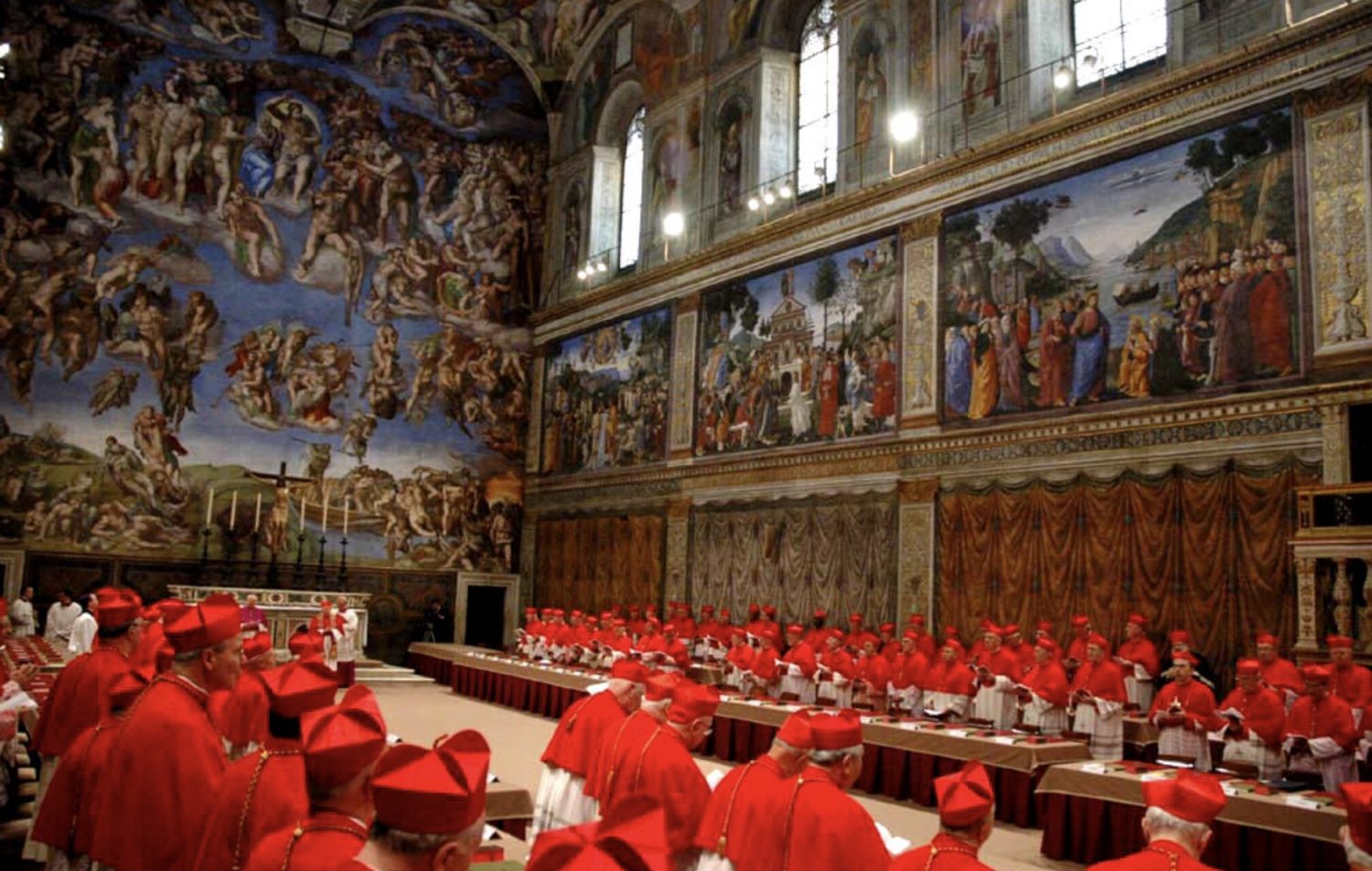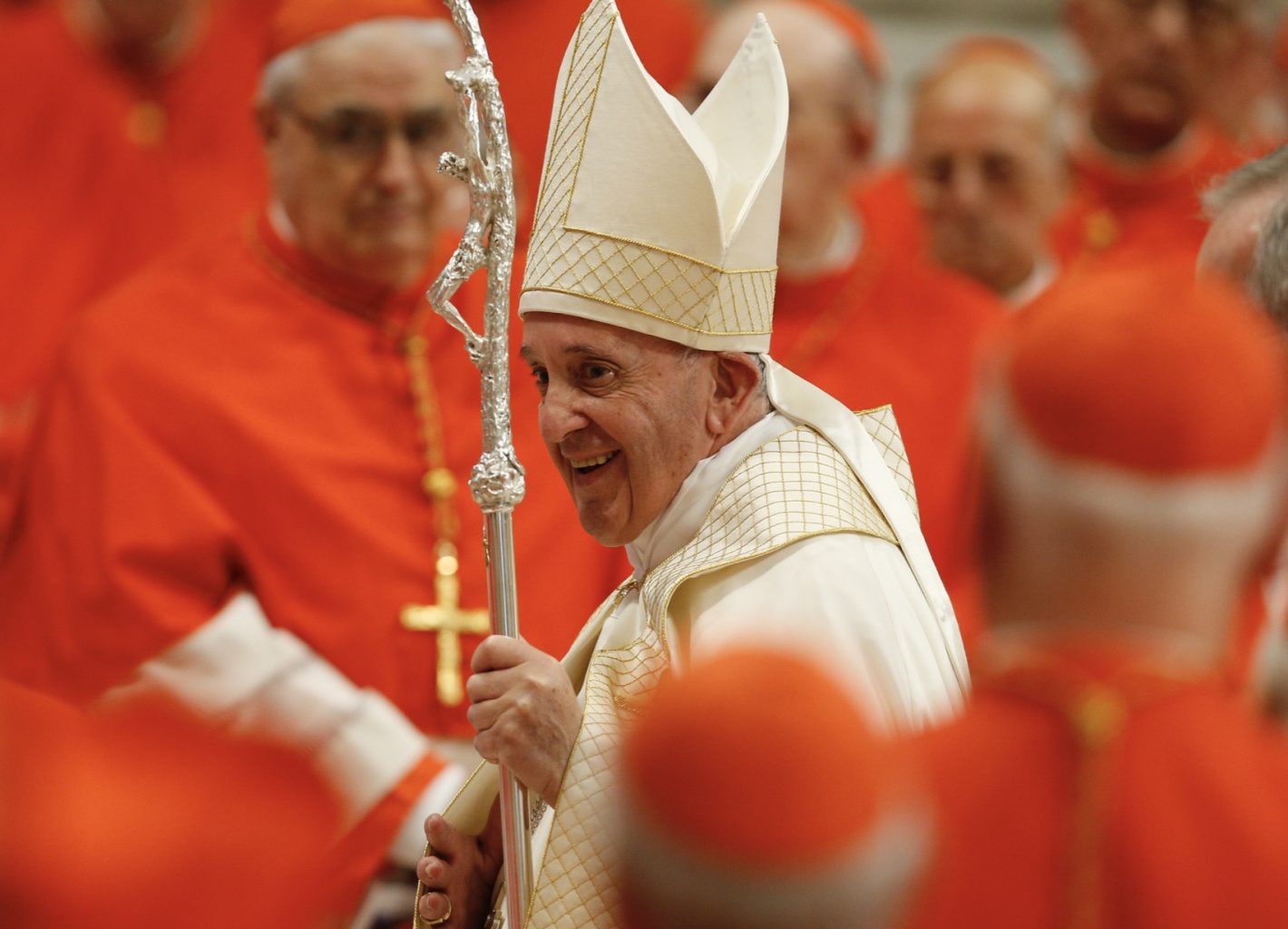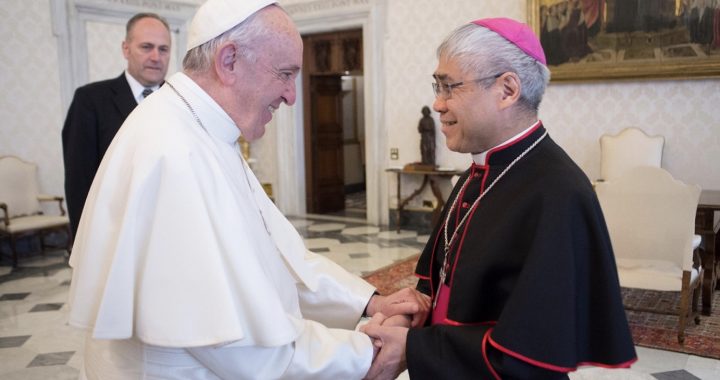Singapore Church Shepherd set to be in largest Asian bloc to elect future Popes
- What it means for the Asian and Singapore Churches
- What it means to be Cardinal William Goh
- Brief History of Cardinals
- Electing a Pope and how Conclaves came about
At the College of Cardinals meeting Pope Francis has called for on 27 August, the Singapore Catholic Church will receive its first Cardinal. Archbishop William Goh is among 21, including five other Asians, the Pope will elevate to this rank at the Consistory.
This order of bishops, who don red hats, is only second in the Church hierarchy after the Vicar of Christ. As head of the Singapore Catholic Church, Abp William, 64, will be Cardinal Priest and the sole ethnic Chinese in the College who is also the only one who speaks Mandarin. He will join the group of Electors of future popes.
What it means for the Asian Church
His rise in rank, as well as those of other Asians, should be seen in the light of the work of European Catholic missionaries who arrived in Asia in the 16th century (the region eastwards of the Middle East). Their toil to spread the Gospel has been bearing great fruits for quite some time now.
Pope Pius XII gave due recognition to the work of these European missionaries In a 1946 Consistory when he created Asia’s first cardinal, Bishop Thomas Tien-ken-sin, Vicar Apostolic of Qingdao in China. Seven years later in 1953, he gave the Red Hat to the second Asian – Archbishop Valerian Gracias, head of the Bombay (Mumbai) Archdiocese in India.
Following in the footsteps of Pius XII, John XXIII also created two, Paul VI, 11, John Paul II, 20, and Benedict XVI, 8. But it is Pope Francis who, within nine years in the Chair of St Peter, went full throttle with 20, including those in the coming August Consistory.
Francis’ reach went into Asian countries that have never had Cardinals and touched those such as Bangladesh Archbishop of Dhaka Patrick D’Rozario in 2016.
Out of the 25 Asians currently in the College, he created 12 of them. Except for one, all were from Southeast Asia, including for the first time from the episcopal sees of Laos and Myanmar. Malaysian (2016) and Bruneian (2020) bishops were among this cohort but they have since died.
From end of August this will be total number of Cardinals in the College:
| Continent | Electors | Non-Electors | Total |
|---|---|---|---|
| Europe | 80 | 67 | 147 |
| North America | 23 | 9 | 32 |
| Latin America | 38 | 18 | 56 |
| Africa | 24 | 15 | 39 |
| Asia | 32 | 14 | 46 |
| Oceania | 4 | 2 | 2 |
| Total | 201 | 125 | 326 |
This is a significant jump in Asian pope electors compared to the four previous conclaves when five were in the Sistine Chapel from which Paul VI emerged as Pope. Nine were there when John Paul I and II were chosen, and 10 were at both Benedict XVI and Francis’ elections. To put this in perspective, from the end of August Asian cardinals will have a far bigger say in who will be the next Pope. Whether he will emerge from among their numbers we do not know.
But their enlarged presence in the College will give the Asian Church’s voice more attention to evangelise a continent of 4.7 billion people that is still under 11 percent Catholic (excluding China, where statistics are difficult to compile).
What it means for the Singapore Church
A Cardinal William Goh will not change the nature of his office as Archbishop of Singapore. His episcopal see remains at the Cathedral of the Good Shepherd. It will be business as usual for the Singapore Church, but how Catholics address him will change. Currently, the style for Archbishop or Bishop is inherited from the British colonial days, which is “Your and His Grace” in greeting and writing. Outside of most Commonwealth countries, the norm is “His and Your Excellency”.
The British style for Cardinals is “His and Your Lordship”.
This is unlikely to be the case with Card William. After Abp Anthony Soter Fernandez was created Cardinal in 2016, a precedent was set as even the Catholic Bishops Conference of Malaysia, Singapore and Brunei styled him as “His Eminence”. This was also adopted for Brunei’s Apostolate Vicar Cornelius Sim in 2020. Both have since died in 2020 and 2021.
Vestments’ colour will also change. From amaranth red (similar to purple) for bishops, Card William will switch to scarlet.
What it means to be Cardinal William Goh
After he was consecrated and installed as the fourth Archbishop of Singapore on 18 May 2013, he told the Archdiocese Catholic News, “I am still the same old Fr William Goh, with the same passion and love for Christ and His Church.
“The office does not change me but I hope I can change the office. I will still be that Shepherd of Christ that I am called to be, to seek the lost, console the hopeless, heal the wounded, give sight to the blind, reconcile those estranged and build bridges and communion in the Church and with the rest of humanity.”
Abp William said his vision “is to work with my brother priests to renew the faithful and together with the laity, to build a vibrant and evangelical Church so that we will be the face of Christ in a world that is bereft of hope and love”.
He has done a lot since then. Setting up the Office of the New Evangelisation or ONE, is his signature centrepiece. His work in building up the Church will continue with more vibrancy and not regress as Cardinal. At heart, he is still Fr William, but some things will have to change and these are spelt out in Chapter III, The Cardinals of the Holy Roman Church, of the Code of Canon Law 349-359.
A few things stand out.
While the primary duty of Cardinals is to elect Popes, they are also required to assist the Holy Father collegially to deal with questions of major importance.
They may also be called as individuals to help him in matters they are familiar with or have a history of expertise. These include those living in their respective dioceses overseas. This means Card William will have to go to Rome whenever the Pope calls him if he is needed. These are instances that are outside his mission as Archbishop of Singapore.
Finally, although Card William will not live in Rome, the Pope will assign him a titular church in the city, as a symbol of his closeness to the Holy Father in assisting him in Church affairs.

Brief History of Cardinals
The custom of a group of select clergy assisting the Pope in the governance of the Church can be traced back to the 1st century when the third successor of St Peter, Pope St. Cletus or Anacletus (76–88), ordained 25 presbyters (early Church priesthood) for the city of Rome. They helped him, as Bishop of the city, to celebrate the Eucharist and administer the Sacraments in his place.
Towards the end of the 1st century, Pope St. Evaristus (97–105) divided the city’s Church’s titles or properties (today’s equivalent to dioceses) among the 25. This practice of assisting the Bishop of Rome developed in the 5th century during Pope St. Simplicius’ reign (468–483).
He arranged for some successor bishops of the original 25 to assist him at his major basilicas of St. Peter, St. Paul, and St. Lawrence. In time they evolved to become his confidants in the governance of the Church and matters of doctrine. The “dioceses” of these chosen bishops are known today as ‘‘suburbicarian sees”. In later centuries they were conferred with the rank of Cardinal Bishops.
The term “cardinal” first appeared during the pontificate of Stephen III. In the Roman Synod of 769, it was decided that Popes should be elected from among deacons and cardinal priests. At the time, the 18 deacons were charged with providing for the needy in Rome. By the 12th century, each of their deaconries had a cardinal leading their work.
The role of Cardinals and their College can change as the Pope sees fit because it was his predecessors who created them. And they have changed over the centuries and recently, John XXIII, Paul VI and John Paul II made substantial modifications.
Pope Francis is doing the same now.
So, how Popes are elected and the role of Cardinals can change. It is the prerogative of the Holy Father to select who should be in the College of Cardinals and no one else, as he is the Vicar of Christ and the Supreme Lawgiver for the Church.
More information: Why cardinals have ranks, and how Pope Francis changed them

Electing a Pope and how Conclaves came about
Excerpt from the 2002 edition of the Catholic Encyclopaedia
Until the 4th century the method of electing the Bishop of Rome did not differ considerably from that used in other bishoprics. The neighbouring bishops, the Roman clergy, and the laity of Rome each participated in the election.
Since the role of these various classes of electors was somewhat unclear and the office was one of extreme importance, the procedure was open to abuse.
Consequently, with the advent of the Christian Roman emperors (4th century) the imperial influence was brought to bear on papal elections.
The first important step in the attempt to reform papal elections was taken by Pope Nicholas II on 13 April, 1059, at the Council of Rome. The decree, which he published, declared that the papal electors were henceforth to be only the higher clergy of Rome (i.e., the Cardinals) with the rest of the clergy and the laity permitted merely to give approbation to the election. The emperor was likewise to be informed of the results of the election and allowed to confirm the choice that had already been made, although it was made clear that this was only a concession granted to him by the Holy See.
Provisions were made also for holding the election outside the city of Rome, if conditions warranted.
At the Lateran Council of 1179 Pope Alexander III, in the Apostolic Constitution Licet de vitanda discordia, further stipulated that all Cardinals were to be considered equal, and that a two-thirds majority of the votes was necessary for a valid election. With the passage of time, it became apparent that the College of Cardinals was on occasion prone to delay its selection of a pope and, as a result, to inflict upon the Church the harmful effects of a long interregnum.
To remedy this situation, Gregory X, by means of his bull Ubi periculum (1274), instituted the conclave system of strict seclusion to secure a more rapid papal succession. Further modifications were added in 1562 by Pope Pius IV who issued regulations regarding the method of voting in the conclave through his bull In eligendis.
Main Image: Asia News
